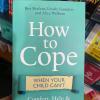Dear Secretary of State,
Last week, all six-year-olds in England’s primary schools were tested through the government’s phonics check, together with the seven-year-olds who ‘failed’ it first time round last year. We, the undersigned, have serious concerns about the usefulness of this test, as well as the emerging negative effects on how children are taught to read in Key Stage 1 and their confidence as readers.
Officially, it is described as assessing text decoding skills. Actually, it is dangerously confused.
The check contains twenty real words and twenty pseudo-words such as "vap" and "ect". The pseudo-words are indicated with pictures of imaginary creatures. It is claimed that all the words in the check can be blended from the letter sounds and therefore are an accurate measure of children’s decoding ability.
With the pseudo-words, any plausible pronunciation is marked correct. So, for instance, children can decode "vead" in either of two ways: they can produce something rhyming with "bed" or with "seed". Accordingly, the pseudo-words items do indeed test decoding... and nothing else.
However, with the so-called "real words", the blend produced must match the sound of a real spoken word. Hence "blow" pronounced to rhyme with "cow" is unacceptable. Had "blow" not been classed as a real word, a response rhyming with "cow" would have earned a mark.
So here, the check no longer measures decoding only. Some five-year-olds may think that "blow" rhyming with "cow" might really exist, and, accordingly, go ahead and offer an incorrect blend. After all, even if they have never encountered such a sound in speech, children often hear adults making unfamiliar sounds when speaking. Children could easily assume that unfamiliar sounds are proper words unknown to them.
Hence, the real words assess both the extent of children’s spoken vocabulary and aspects of their confidence. The evidence from surveys (such as those conducted by the United Kingdom Literacy Association and the National Association for the Teaching of English, among others), is that this test is actually undermining the confidence of some children who are already reading well by the age of 6 as they try to make sense of words that are actually nonsense. Many competent readers tried to make the pseudo-words fit something they knew, for example by changing "proom" to "groom", and thus were marked down.
Note that the alleged real words do not actually attain the full status of real words, given the way they are presented. They are isolated pieces of text, out of context. Now, blending "row" can rhyme either with "go" or "bough". "Paws" makes a sound that also fits "pores", "pause" and "pours". Without a context, the child cannot yet identify a word properly. Needless to say, the check attempts to exclude these sorts of examples. Even so, they serve to show that the phonics check does not actually deal with the reading of real words (see Davis, 2013) .
Further clear evidence is emerging for recent government-funded evaluations that many schools are practising for the check with nonsense-word decoding exercises. This is hardly surprising, since it is a high-stakes test, with results collected, analysed by the government and made available to Ofstedinspectors (“The most frequently reported change by both survey and case-study respondents was the introduction of pseudo words into phonics sessions.” (Walker et al, 2014, p8)).
Children are trained to decode, but in the check itself they encounter both decoding tasks and pieces of text wrongly represented as fully-fledged real words. The check’s official description is seriously misleading. Even if only a small percentage of those taking the test are actually perplexed by its incoherence, this is still a very serious consequence.
Teachers of early reading can assess whether six-year-olds can "decode" in a few seconds, at no extra cost, by listening to them read aloud from an appropriate text. They do not need a "check". The government claims that the check plays an essential role in detecting reading problems is flawed. The check creates more problems than it solves.
Indeed, the latest evaluation of the check for the government shows that children’s overall attainment in reading and writing, as measured in Key Stage 1 tests taken at the age of 6 or 7, is unaffected either by the school’s enthusiasm for the phonics check, or by what approach the school has taken to the teaching of phonics (Walker et al, 2014, p10).
In addition, a “substantial minority” of pupils who did not achieve the expected standard on the phonics check went on to achieve the government’s expected level 2 in reading and writing in the Key Stage 1 tests a year later, the research found. (Walker et al, 2014, p10). This raises questions about the reliability of the phonics check as a measure of likely future literacy success.
Thus, the phonics check is methodologically flawed, undermines confidence of children, particularly some of the more able, is negatively impacting on how reading is taught and is an inefficient, not to mention expensive and time-consuming, way of assessing an aspect of children’s reading ability.
It is time to abolish it.
Yours faithfully,
David Reedy, general secretary, UK Literacy Association
Andrew Davis, University of Durham
Greg Brooks, emeritus professor of education, University of Sheffield, chairperson, Federation of European Literacy Associations
John Gawthorpe, chairman, National Association for Primary Education
John Hickman, chair, National Association of Advisers for English
Russell Hobby, general secretary, National Association of Head Teachers
Chris Keates, general secretary, NASUWT
Paul Latham, chair, The Association for the Study of Primary Education
Bethan Marshall, chair, National Association for the Teaching of English
Professor Janet Moyles on behalf of The Association for the Professional Development of Early Years Educators
Professor Carole Torgerson, chair in education, Durham University School of Education
















